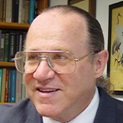1.8: Referencias
- Page ID
- 70177
\( \newcommand{\vecs}[1]{\overset { \scriptstyle \rightharpoonup} {\mathbf{#1}} } \) \( \newcommand{\vecd}[1]{\overset{-\!-\!\rightharpoonup}{\vphantom{a}\smash {#1}}} \)\(\newcommand{\id}{\mathrm{id}}\) \( \newcommand{\Span}{\mathrm{span}}\) \( \newcommand{\kernel}{\mathrm{null}\,}\) \( \newcommand{\range}{\mathrm{range}\,}\) \( \newcommand{\RealPart}{\mathrm{Re}}\) \( \newcommand{\ImaginaryPart}{\mathrm{Im}}\) \( \newcommand{\Argument}{\mathrm{Arg}}\) \( \newcommand{\norm}[1]{\| #1 \|}\) \( \newcommand{\inner}[2]{\langle #1, #2 \rangle}\) \( \newcommand{\Span}{\mathrm{span}}\) \(\newcommand{\id}{\mathrm{id}}\) \( \newcommand{\Span}{\mathrm{span}}\) \( \newcommand{\kernel}{\mathrm{null}\,}\) \( \newcommand{\range}{\mathrm{range}\,}\) \( \newcommand{\RealPart}{\mathrm{Re}}\) \( \newcommand{\ImaginaryPart}{\mathrm{Im}}\) \( \newcommand{\Argument}{\mathrm{Arg}}\) \( \newcommand{\norm}[1]{\| #1 \|}\) \( \newcommand{\inner}[2]{\langle #1, #2 \rangle}\) \( \newcommand{\Span}{\mathrm{span}}\)\(\newcommand{\AA}{\unicode[.8,0]{x212B}}\)
- Para una monografía reciente, véase: “Nuevas rutas sintéticas a prostaglandinas y tromboxanos”, Roberts, S.M.; Scheinmann, F., Academic Press, Nueva York (1982).
- Woodward, R.B.; Gosteli, J.; Ernest, I.; Friary, R.J.; Nestler, G.; Raman, H.; Sitrin, R.; Suter, C.; Whitesell, J.K. J. Am. Chem. Soc. 1973, 95, 6853.
- Brown, E.D.; Lilley, T.J. Chem. Commun. 1975, 39.
- Brewster, D.; Myers, M.; Ormerod, J.; Otros, P.; Smith, A.C.B.; Spinner, M.E.; Turner, S. J. Chem. Soc. Perkin I, 1973, 2796.
- Corey, E.J.; Ohno, M.; Vatakencherry, P.A.; Mitra, R.B. J. Am. Chem. Soc. 1964, 86, 478.
- Volkmann, R.A.; Andrews, G.C.; Johnson, W.S. J. Am. Chem. Soc. 1973, 97, 4777.
- Para una introducción al análisis retrosintético a nivel simple ver: Warren, S. “Organic Synthesis: The Disconnection Approach”, Wiley-Interscence, New York (1982).
- Para las revisiones véase: (a) Wipke, W. T.; Howe, W. J. (Eds.) “Síntesis orgánica asistida por computadora”, ACS Symposium Series volumen 61, American Chemical Society, Washington, D. C. (1977); (b) Corey, E. J.; Long, A. K.; Rubenstein, S. D. Ciencia 1985 228, 408.
- Hendrickson definió el nivel de funcionalidad de manera diferente, es decir, como f = π + z donde π = número de enlaces C-C π- (idéntico a u = nivel de instauración como se define en la página 12) y z = número de uniones carbono-heteroátomo: Hendrickson, J. B. Temas Current Chem. 1976, 62, 49. Esta definición tiene la característica deseable de indicar una equivalencia para los tautmeros, por ejemplo, la f = 2 de Hendrickon tanto para las cetonas como para sus enoles. Al igual que con nuestra definición, el concepto de Hendrickson también reconoce que los químicos orgánicos ven todos los carbinoles, ya sean 1°, 2° o 3° como funcionalmente equivalentes (f = 1), y que “existen familias funcionales que se interconvierten fácilmente con fines sintéticos”: Hendrickson, J. B. J. Am. Chem. Soc. 1971, 93, 6847. Pero la f de Hendrickson no incorpora el concepto de niveles de funcionalidad negativos engendrados por metales u otros elementos, por ejemplo, silicio, que pueden servir como electrofugas cuando se unen al carbono.
- Pauling, L.
- Para compilaciones ver: (a) McOie, J. F. W. (Ed.), “Protective Groups in Organic Chemistry”, Plenum, Nueva York (1973); (b) Greene, T. W., “Protective Groups in Organic Synthesis, John Wiley & Sons, Nueva York (1981).
- Para opiniones ver: (a) Seebach, Dieter Angew. Chem. 1979 91, 259: (b) Aakermark, B.; Baeckvall, J. E.; Zetterberg, K. Acta Chem. Scand., Ser. B 1 982 B36, 577.
- Para una compilación ver: Hase, T. A. (Ed.), “Umpoled Synthons”, John Wiley & Sons, Nueva Jersey (1987).
- Kaya, R.; Beller, N. R. J. Org. Chem. 1981 46, 196.
- Ross, N. C.; Levine, R. J. Org. Chem. 1964 29, 2341.


